Freeze Dryer vs Dehydrator – Which Is Best for Food Preservation?
Welcome! This article contains affiliate links, meaning I get a commission if you decide to make a purchase through my links, at no extra cost to you.
Hmmm. Freeze dryers vs dehydrators. Are they the same things? And is one better than the other? Which method is best for off-grid, homesteading, survival, and food preservation?
Well, first off, freeze-drying and dehydrating aren’t the same. And both have significant pros and cons. There are also a few freeze-dryer vs dehydrator misconceptions that I’d like to clarify.
My family’s been freeze-drying, dehydrating, smoking, and canning to preserve foods for many years. Plus, just about everyone I keep regular company with does, also. And we all share secrets and tips. (We’re backwoods folks who care about culture, lineage, saving money, and the transference of time-tested information to keep us all healthier and happier).
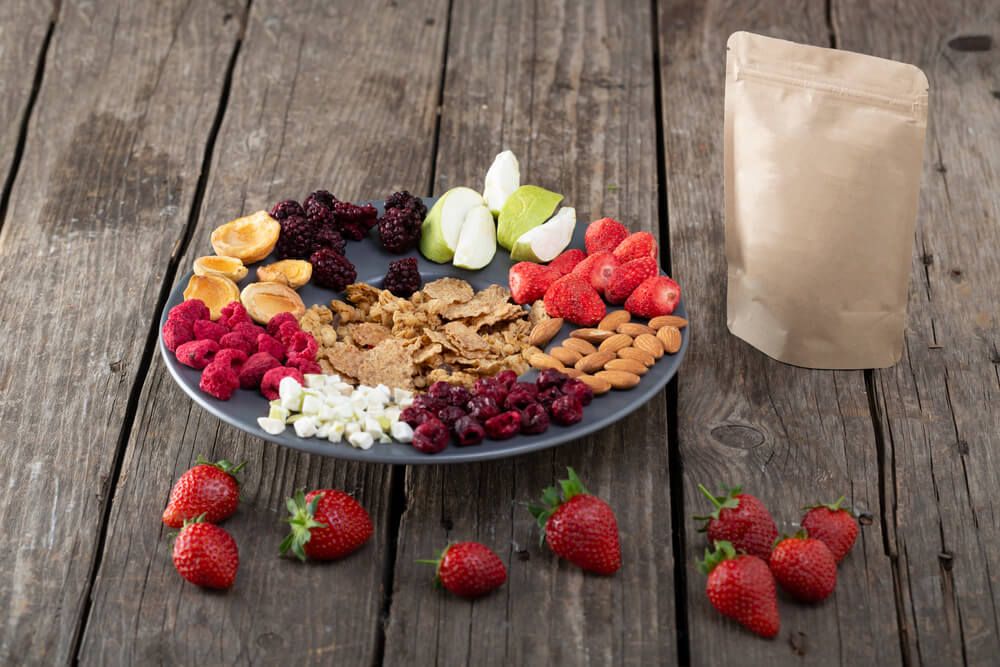
And today, we’re here to learn answers to questions like:
- How do dehydrating and freeze-drying food affect taste?
- What are the shelf lives for dehydrated and freeze-dried foods?
- How much nutritional value do foods lose when dehydrated or freeze-dried?
- How much money can a family save yearly by freeze-drying or dehydrating foods?
How does that strike you? Sound good?
OK – let’s get down to it!
Woo-Hoo!
(Giddy up!)
Freeze Dried vs Dehydrated Key Differences Overview
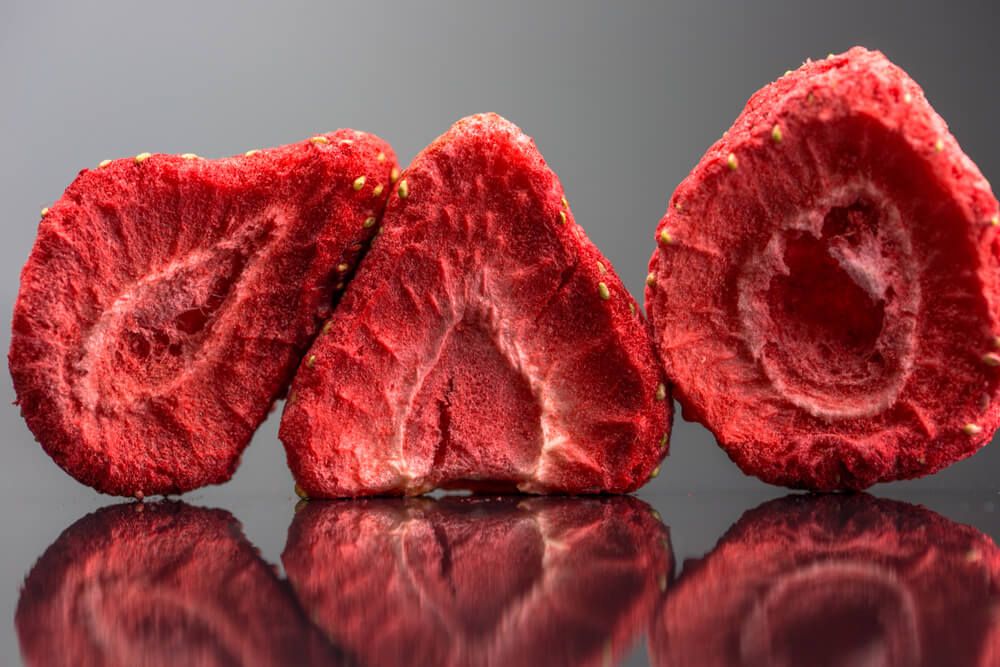
Both freeze-drying and dehydrating decrease the moisture content in food. However, there are differences between these two food preservation methods, including:
- Food dehydrators utilize air circulation, ventilation, and low heat to decrease water content by about 80 to 90%. Comparatively, freeze dryers use cold air, heat, and vacuuming to remove up to 99% of the moisture in the food. This moisture removal is vital. Because when food has less water content, it stores for longer durations and retains more of its nutritional value.
- Dehydrated food usually loses its natural flavor, whereas freeze-drying preserves the natural flavor very well. Further, freeze-dried foods retain up to 97% of their nutritional value, whereas dehydrated foods typically retain much less.
- Dehydrated foods tend to become leathery, losing their natural texture and appearance. In comparison, freeze-dried foods retain their natural appearance and texture.
- The biggest reason I prefer freeze-drying over dehydrating is that freeze-dried foods can last up to 25 years! Comparatively, dehydrated foods typically last as long as five years, but many only stay good for several months. This difference is due to the breakdown of nutritional value in dehydrated foods on a much faster scale than in freeze-dried foods.
Finally, dehydrated foods are much cheaper to purchase than freeze-dried foods. This cost delta is due to the retention of natural appearance, texture, and nutritional value in freeze-dried foods. The leathery texture, shriveled appearance, and lower nutrition of dehydrated foods make them worth less.
However, dehydrated foods are still really awesome – and we still think they offer tremendous value to homesteaders.
All right. Nobody likes history that much. But let’s quickly dive into the historical record of drying foods as a preservation method.
No worries, we’ll make it fast and fun!
Old-School Methods for Drying Foods
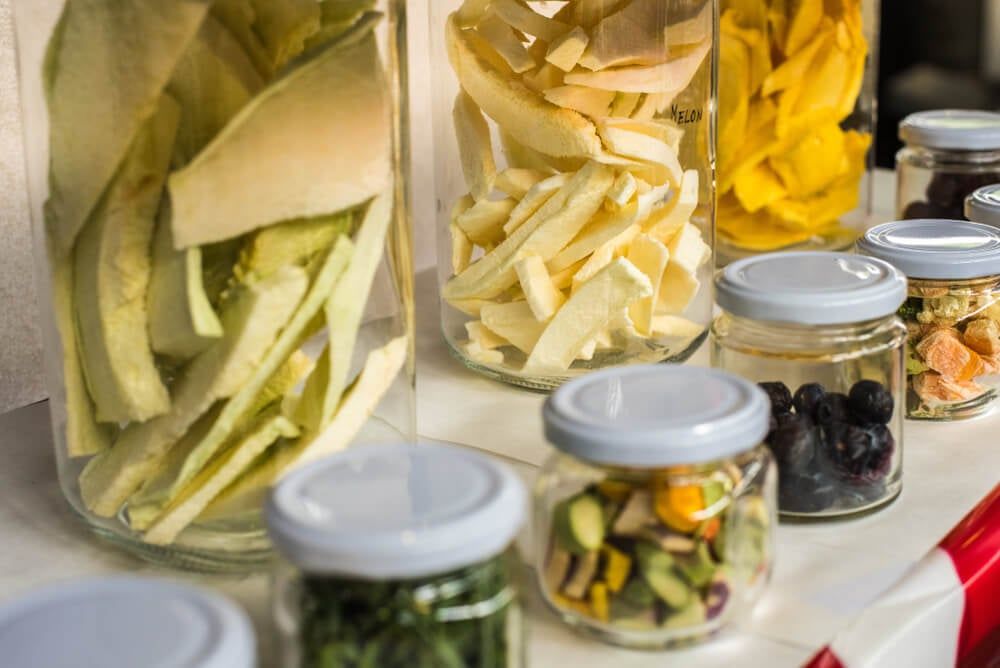
In olden times before refrigeration and meat freezers were available, homesteaders preserved their foods by salt packing, salt-brining, burying, smoking, and dehydrating. It didn’t take long until folks figured out that the less moisture a food has in it, the more effectively it preserves.
Historians know that the ancient Romans, and some Middle Eastern populations, used heat and smoke to dehydrate vegetables, fruits, and meats.
Comparatively, freeze-drying is a much more modern process, with its first notable usage stemming from World War II. It started as a way of preserving plasma for blood transfusions and certain medicines. But then, eventually, freeze-drying got used to store food for the troops in battle. Freeze drying became even more famous as the method for making astronaut food!
Here’s what Penn State had to say about the freeze-drying process.
“The machine freezes the food to a temperature between -30°F and -50°F. Next, a vacuum pump pulls the air out of the chamber and the trays are slightly heated. As the water in the food heats, it sublimates (ice is directly converted from solid to water vapor) and is removed from the product.”
PennState Extension, https://extension.psu.edu/lets-preserve-freeze-drying
Both dehydration and freeze-drying have come a long way via modern innovative engineering and manufacturing processes. Luckily, we can gain from these contemporary technologies by saving money while elongating the shelf life of nearly every food type imaginable.
OK, enough history!
Let’s analyze more closely how freeze-dryers and dehydrators extend food shelf life. I mean, who doesn’t love long-term food preservation?
Can you feel the excitement?
I surely can!
Freeze Dryer vs Dehydrator – Food Storage and Shelf Life

Shelf life has a whole lot to do with moisture content. More moisture leads to less shelf life, while less increases shelf life. So, it follows that since freeze-dryers remove more moisture from foods than dehydrators do, freeze-dried foods will have a longer shelf life than dehydrated foods.
It’s a lot longer. While dehydrated foods typically last between several months and up to five years, freeze-dried foods can last as long as 25 years. That is one heck of a shelf life!
And as mentioned above, freeze-dried foods retain their natural appearances and textures while maintaining the vast majority of their original nutrients. It’s worth noting that even the best-preserved foods will have a gradual breakdown of nutritional value. Every preserved food has a limited lifespan.
So, does that mean that freeze-dried foods are superior to dehydrated foods in every case?
No, not in my opinion. Food drying with a dehydrator has its benefits, including:
- Stores very well in mylar bags, Mason jars, or vacuum-sealed food containers
- Genius way to save money by preparing healthy school lunches
- Excellent supplement for short-time food storage supplies
- It’s insanely easy to dehydrate a wide variety of foods
- Dehydrators are far less expensive than freeze-dryers
While I prefer freeze-drying foods relative to dehydrating foods, my family still finds many reasons to use dehydrators regularly. Freeze-drying foods is a better strategy for creating long-term food reserves. But dehydrating costs less – and it’s great for long-term storage.
While I don’t understand freeze-drying technology on a deep scientific level, I can tell you from my years of experience that freeze-dried food retains its original shape, appearance, texture, and flavor very well. I’m always amazed at how much the yummy flavor remains the same!
Freeze-drying is a whole different ball game than dehydrated foods.
Now, on that note, I have never tried freeze-dried food that is 25 years old. Yet – various freeze-dryer manufacturers make the 25-year claim, which is fantastic. Heck. Even if freeze-dried food only lasted 15 or 20 years, that’s fine with me! I mean, in 15 or 20 years, I could freeze-dry something else!
A good food saver creates a delicious food flavor!
Don’t think of freeze dryers and dehydrators as competing opponents. Instead, consider them complements of one another that can help you to prepare for food shortages and just everyday food consumption requirements.
Freeze Dried vs Dehydrated. Which Types of Foods Can Be Dehydrated?
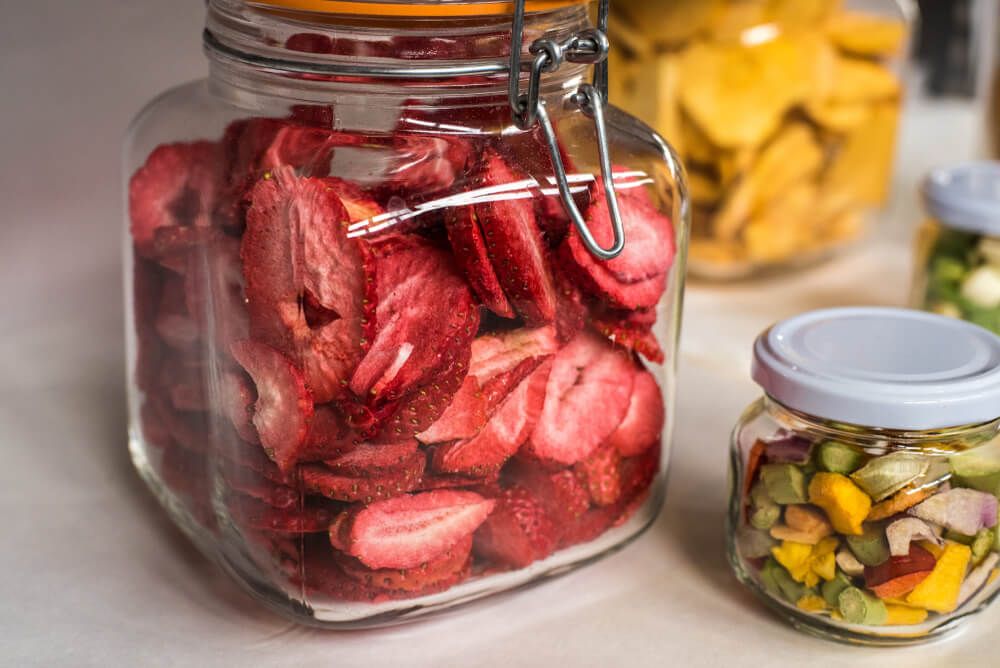
According to WebMD, you can dehydrate just about any food without specialized equipment. Here are some of the most common dehydrated food types:
- Apples, berries, cherries, dates, kiwis, papayas, and other fruit leathers
- Carrots, garlic, onions, mushrooms, potatoes, and other vegetables
- Basil, cilantro, ginger, parsley, oregano, turmeric, and other herbs
- Lemon, lime, grapefruit, orange, and other citrus fruits
- Quick cooking grains
And with an appropriately designed dehydrator, you can also dehydrate chicken, beef, pork, fish, and other meats. Remember, dehydration means taking away the water from something, and you can do that with just about any food.
On a side note, I love dehydrated strawberries! All dried fruit is super tasty to me! You can grow your own fruit trees from seed, then dehydrate or freeze dry excess fruit to save tons of money.
Read More!
- 49 Weird Things to Dehydrate In a Dehydrator – Dehydrated Mushrooms, French Toast, Sauerkraut?!
- 61+ Best Dehydrator Recipes for Jerky, Fruit, Vegetables, and More
- 25 Smokin’ Hot Smokehouse Ideas! DIY Plans You Can Use for Free!
- How to Harvest and Dry Elderberries! 3 Best Ways!
- Rehydrating Beef Jerky: A How-to Guide
Freeze Dryer vs Dehydrator. Which Types of Foods Can Be Freeze Dried?
Almost all foods can be freeze-dried and retain the most natural taste, including dairy products, desserts, entire meals, fruits, meats, and vegetables. Oily foods don’t do well in freeze-dryers, so avoid trying to freeze-dry butter, real chocolate, honey, jams, peanut butter, and syrup.
Freeze Dryer vs Dehydrator: Safety Considerations
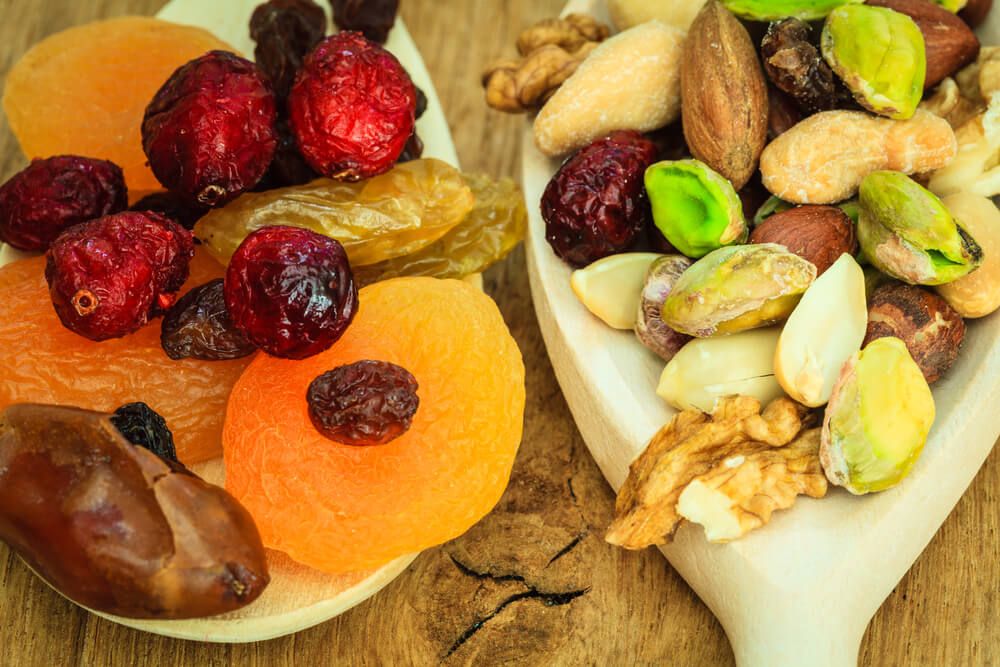
Columbia University reports that the freeze-drying process involves chemical treatments. Hmmm. The scientists say the following. “While most of the chemicals used in these processes are FDA approved and regulated, it is good to be aware that some chemicals may have adverse health effects, particularly for those with a sulfite sensitivity.”
The more you know.
Comparatively, dehydration doesn’t involve chemicals. Food can get dehydrated by the sun, atmospheric heat, and air circulation without chemicals.
Of course, fire and smoke can dehydrate foods, and those methods may create certain unhealthy chemicals.
Whether you freeze dry or dehydrate your foods, always be mindful of the possible adverse effects. The goal is to enhance health, not slow it down, right?
OK, let’s review some helpful tips for freeze-drying and dehydrating food.
We’ll do freeze-drying first, OK?
YES!
Genius Tips for Freeze-Drying Foods
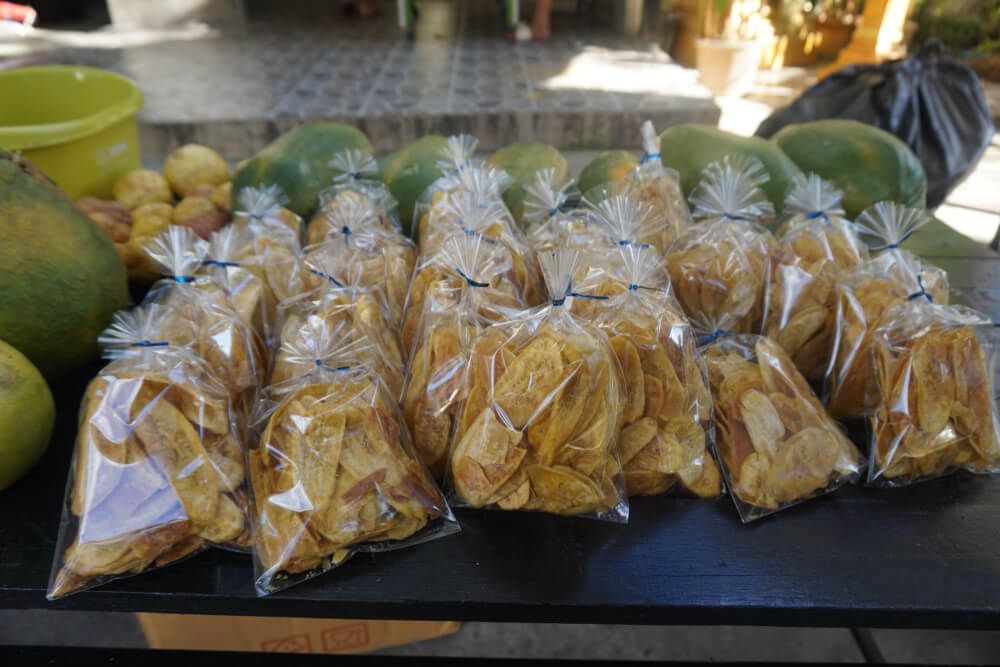
To achieve the best results when freeze-drying foods:
- Use parchment paper to keep the freeze dryer’s trays clean
- Blanch potatoes beforehand, or they will turn black via oxidation
- Peel veggies and fruits and cut them into manageable chunks before freeze drying
- Fearlessly pour raw eggs, milk, soup, and similar foods directly onto the freeze-dryer trays
- If you want to leave the skins on, cut the plants in half and place them skin-side down in the stainless steel trays
Note that, although cost-effective, the lyophilization process of freeze drying does not necessarily kill pathogenic bacteria that may be present in foods. So, ensure to label meat foods appropriately after freeze-drying. That way – you remember to cook them!
PS – my dog and best buddy, Buckethead, says that freeze-dried dog food is SCRUMPTIOUS!
Clever Tips for Dehydrating Foods
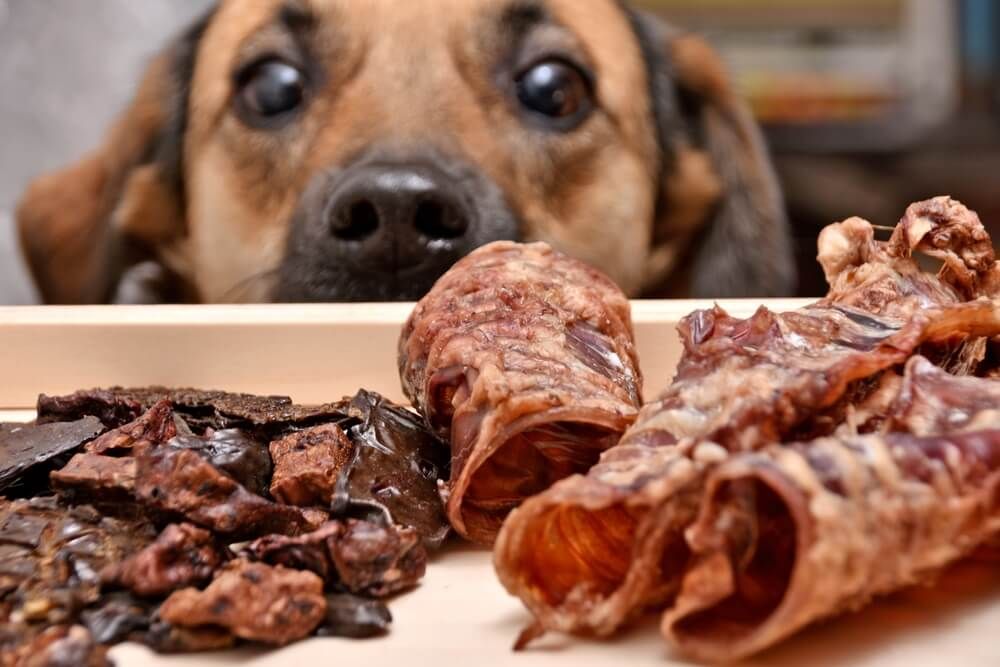
Healthline recommends various methods for dehydrating foods, including:
- Air drying
- Sun drying
- Oven drying
- Solar dehydrator drying
- Electric dehydrator drying
This heated drying process can keep the dehydrator trays at about 140 degrees Fahrenheit as long as required to achieve the desired effects. I use my oven for dehydrating foods even though we have a nice dehydrator. It’s just an individual preference.
One reason is space. I can fit a lot more in the oven at once. And it’s also easier to pull individual racks out for flipping and moving the food around to maximize the dehydrating effects and minimize rubbery texture development. Overall, it’s a tremendously clean and efficient process.
That’s it. We made it to the end together!
Final Thoughts about Freeze Dryer vs Dehydrator
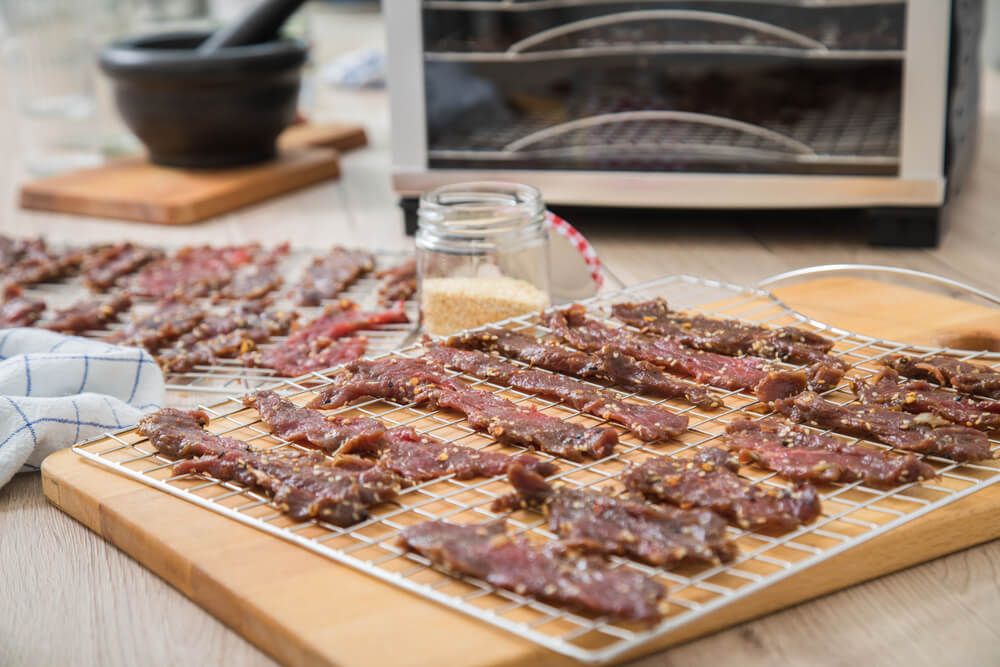
Well, that’s about it for today. Man, that went fast, and I had a BLAST!
I hope you did too, and that you learned as much about dry food as I did.
Dehydrating and freeze-drying foods can make positive differences in various areas of life – like emergency preparedness for natural disasters, camping, and hunting, keeping your family’s daily food stores stocked, living a healthier lifestyle, making your pet foods, and saving a lot of money relative to paying for healthy foods in a grocery store.
My wife loves buying BIG when something good is on sale and then processing it so we will have it for years. She’s amazing. And so are you!
Thank you for reading along today, and I wish you the best with your freeze-drying, dehydrating, and other food preservation efforts!
Do you have more questions about freeze-drying vs dehydrating? Feel free to ask!
We have tons of experience canning, dehydrating, and storing food long-term. And we’re happy to share.
Thanks again for reading.
Have a good day!
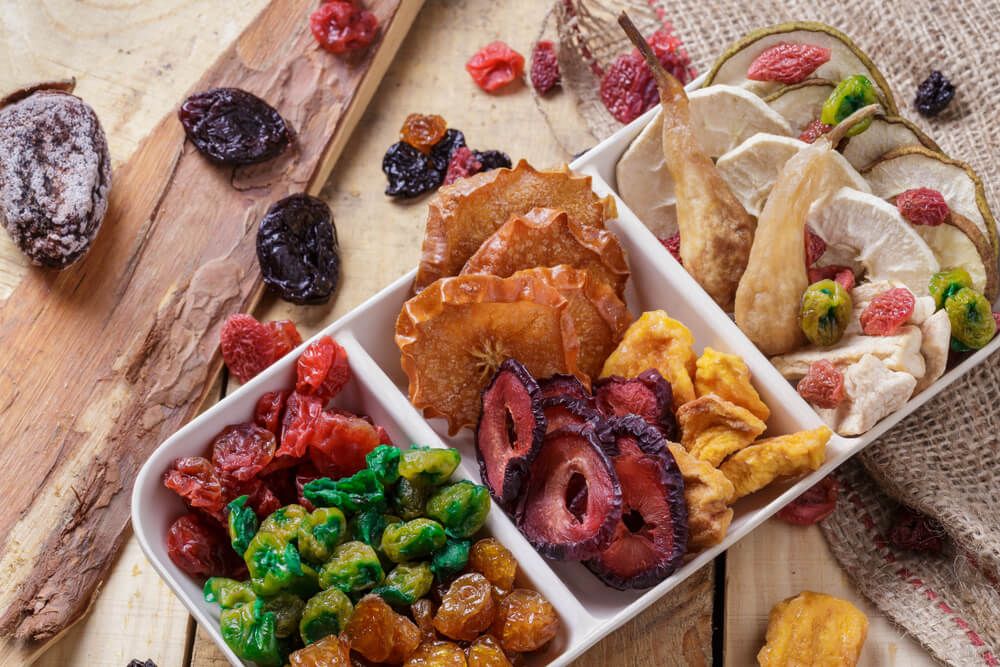

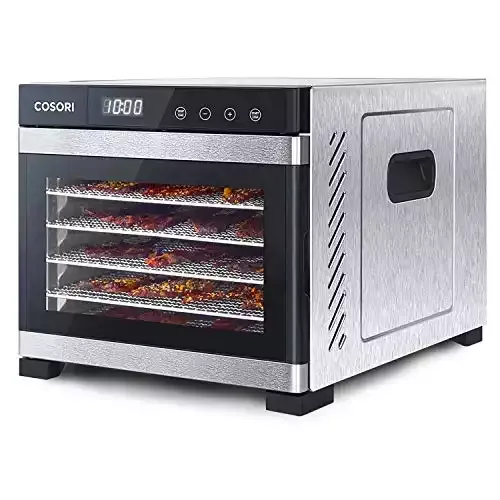
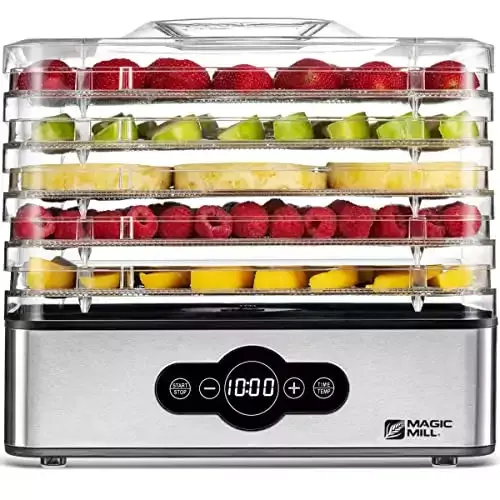
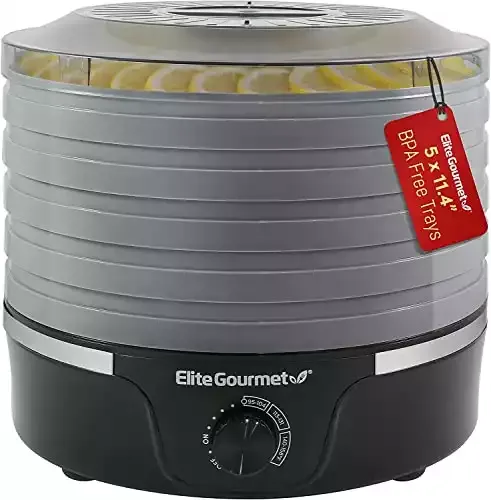
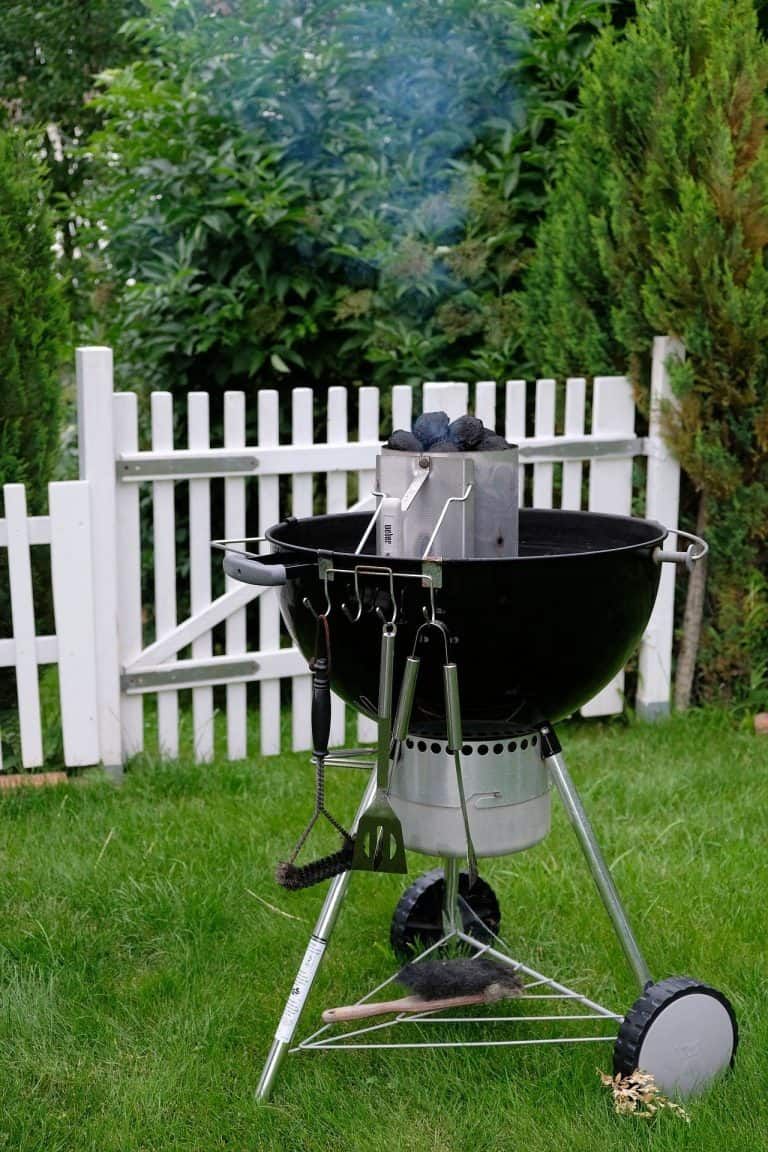
![Best Wood for Smoking Ribs [9 Options That’ll Make You So Hungry!]](https://69be7209.flyingcdn.com/wp-content/uploads/2022/05/texas-bbq-charcoal-offset-smoker-backyard-bbq-cooking-768x513.jpg)
![How to Pasteurize Goat Milk at Home [3 Simple Ways]](https://69be7209.flyingcdn.com/wp-content/uploads/2021/10/goats-in-field-with-goat-milk-bottles-ss-768x594.jpeg)
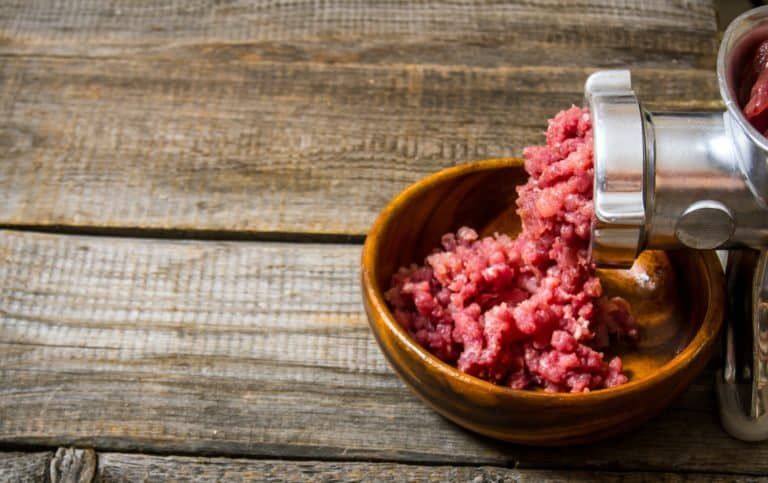
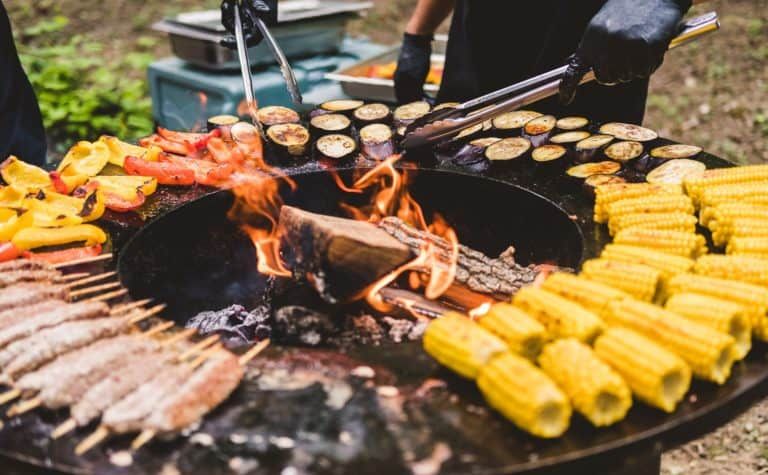
![What to Do With Orange Peels? [27 Nifty Ideas!]](https://69be7209.flyingcdn.com/wp-content/uploads/2022/11/parus-major-bird-visiting-an-orange-peel-feeder-768x514.jpg)
This is a nice post.
However, it is a bit ‘helter-skelter’ when it comes to organizing thoughts:
It would be less confusing if there were sub headings that separate Dehydrated foods and Freeze Dried foods. Treating them as separate instructions and tips and usage will clarify thoughts and make it easier to read.
Oh, and PS: The instructions for freeze drying meat from Harvest Right (Where I purchased my freeze dryer) is that meat is ALWAYS cooked first. You never freeze dry uncooked meat for safety.
As you clearly point out, each type of preservation has its merits and downsides. (Including ones not mentioned here except as passing: Canning, regular freezing, smoking, etc.). I will choose to make freeze dried meals and FD those foods that would take a long time to ‘rehydrate’ and use lots of water, and meats.
I will also FD cooked beans and cooked rice, for ease of use and also for maintaining the food value, and for the
fact that less water is needed to rehydrate.
Things like herbs would be dehydrated.
The most important thing to take away here, is, I believe, that FD foods retain more nutritive value and long term storage is much better.
FD foods are more expensive to purchase, and buying your own FD is costly.
That cost can be mitigated, I also think, by either sharing the cost between family members, selling some of your product (if that is legally possible), and renting the FD out to known friends, or taking into account what you FD yourself vs. what you can get commercially. I wanted FD organic chicken, but it is EXTREMELY expensive IF you can find it. But by FD it myself, I can save hundreds of dollars.
Thank you again for the post.